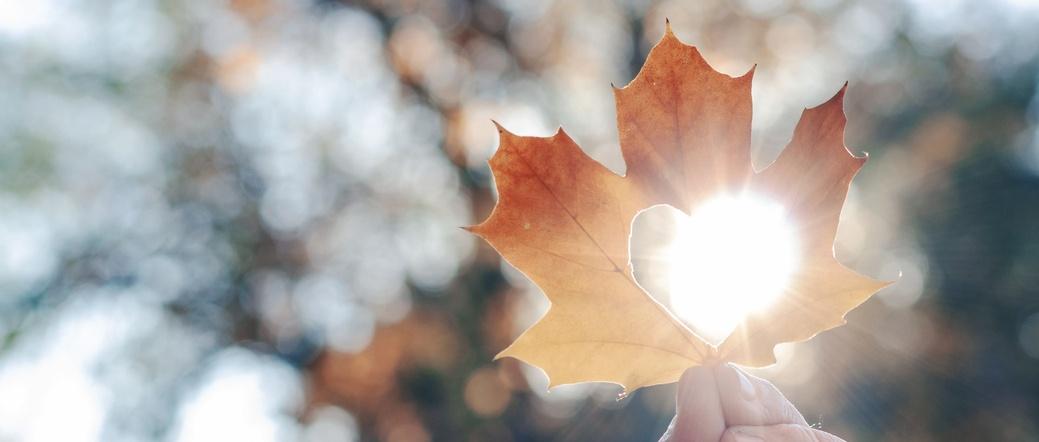
Winter wellness tips: how to cope with SAD
Peer reviewed by Dr Krishna Vakharia, MRCGPLast updated by Victoria RawLast updated 25 Nov 2024
Meets Patient’s editorial guidelines
- DownloadDownload
- Share
- Language
- Discussion
When the days begin to shorten, many people find themselves spending less time outside. These darker days can cause some to feel depressed and have less energy. If you’re someone affected by seasonal affective disorder (SAD) then you understand how difficult this time of year can be.
In this article:
Continue reading below
What is seasonal affective disorder?
Seasonal affective disorder (SAD) is a common type of depressive disorder that doctors and psychologists treat with various forms of therapy and medicine. It occurs when you develop symptoms of depression, such as sadness, low energy, irritability, and fatigue during particular months of the year.
SAD typically begins and ends about the same time each year. For most people, that means symptoms show up in mid to late autumn and last until springtime. But there is a group of people who also experience SAD in the summer months. While not as common as wintertime SAD, those who deal with it in the summer experience similar symptoms.
Women are affected more than men, and SAD is more likely to occur if you or a family member have depression. It also occurs more frequently in younger adults than in older adults.
The diagnosis of SAD is based on you having episodes of depression which have occurred at least two years running during the winter months, and with no symptoms during the spring.
What does winter have to do with depression?
We do know that light is very important for health. Certain hormones in the body respond to light, and research has shown that your brain needs it to control your body clock. Throughout the winter, we are less exposed to the sun because the days are shorter which alters your circadian rhythms - sleep-wake cycles. Therefore, the signals to a section of your brain that controls the circadian rhythm (hypothalamus) are interrupted.
When it's dark at night, your eyes send a signal to the hypothalamus that it's time to feel tired - so if it's dark by 5 pm it affects your body's alertness levels.
Continue reading below
SAD symptoms
Since SAD is seasonal, you might start noticing mild symptoms in the late autumn. Often, these symptoms get worse as the months go by until they ease in spring. Symptoms tend to be worse in December, January, and February.
Symptoms include:
Feeling depressed most of the day, every day.
Low energy.
Insomnia.
Sadness.
Fatigue.
Overeating - in non-seasonal depression, appetite can go up or down. In SAD, overeating is much more commonly seen.
Weight gain.
Cravings for carbohydrates.
Social withdrawal - feeling like hibernating.
Losing interest in favourite activities.
Difficulty concentrating.
How to deal with SAD
The National Institute for Health and Care Excellence recommends that SAD be treated in the same way as other types of depression. This includes talking therapy or psychotherapy, such as cognitive behavioural therapy (CBT) or medicine such as antidepressants.
In addition to a professional treatment plan that may involve psychotherapy or medicines - or both - there are several home therapy options that may help relieve the symptoms of SAD.
Self-care is an important part of managing SAD. Here are some things you can try on your own:
Light therapy
Also called phototherapy, this treatment involves sitting in front of a special bright light for a specific amount of time each day. The National Institute of Mental Health recommends sitting in front of the box, first thing in the morning, for 20-60 minutes. This should be done from early autumn until spring. Light therapy is a popular treatment for SAD, but it's not clear whether it's effective or not.
Get outside as much as possible
The lack of sun exposure is part of what causes SAD, so it's important to spend some time outside. Even a brief lunchtime walk can be beneficial.
Sit by the window
If mobility issues prevent you from getting outside, you can always keep your blinds open and sit by the window.
Get moving
Regular exercise can boost your mood if you have depression, and it's especially useful for people who have mild to moderate depression. Aim for 30-60 minutes a day, five days a week, of aerobic and strength training exercises. However, even 10 minutes a day of brisk walking can help. Getting outside for some of that time will help target the specific symptoms of SAD.
Focus on the positives
Focusing on the positive can be a powerful way to reduce feelings of depression. Volunteer, make time to schedule a Skype call with a loved one who may be miles away, or simply go for a walk in the park.
Continue reading below
Can vitamin D help?
Most experts agree that there research related to vitamin D deficiency in people who have SAD is inconclusive. While a vitamin D deficiency may play a slight role in SAD, depression from low vitamin D levels is usually year round.
Don't self-diagnose SAD or try to manage your symptoms before talking with your doctor first though. Ventimiglia, says that even though light therapy and vitamin D supplements are recommended, it is best to consult with a health professional because you may attribute your symptoms to SAD when another possible medical condition is the cause.
Patient picks for Seasonal affective disorders

Mental health
How to beat the end-of-summer blues
Let's face it, there's nothing quite like a bright, sunny day to lift the spirits. So it's no wonder that when the summer begins to draw to an end some of us feel a little bit low.
by Gillian Harvey

Mental health
How to combat winter depression and increase your serotonin
Winter depression - also known as seasonal affective disorder (SAD) - affects around 2 million people in the UK. The lack of sunlight in winter causes a decrease in serotonin levels, the hormone that makes us feel happy. People with SAD can combat their depressive symptoms by following techniques that increase your serotonin.
by Victoria Raw
Continue reading below
Article history
The information on this page is peer reviewed by qualified clinicians.
Next review due: 24 Nov 2027
25 Nov 2024 | Latest version
20 Dec 2017 | Originally published
Authored by:
Sara Lindberg

Ask, share, connect.
Browse discussions, ask questions, and share experiences across hundreds of health topics.

Feeling unwell?
Assess your symptoms online for free